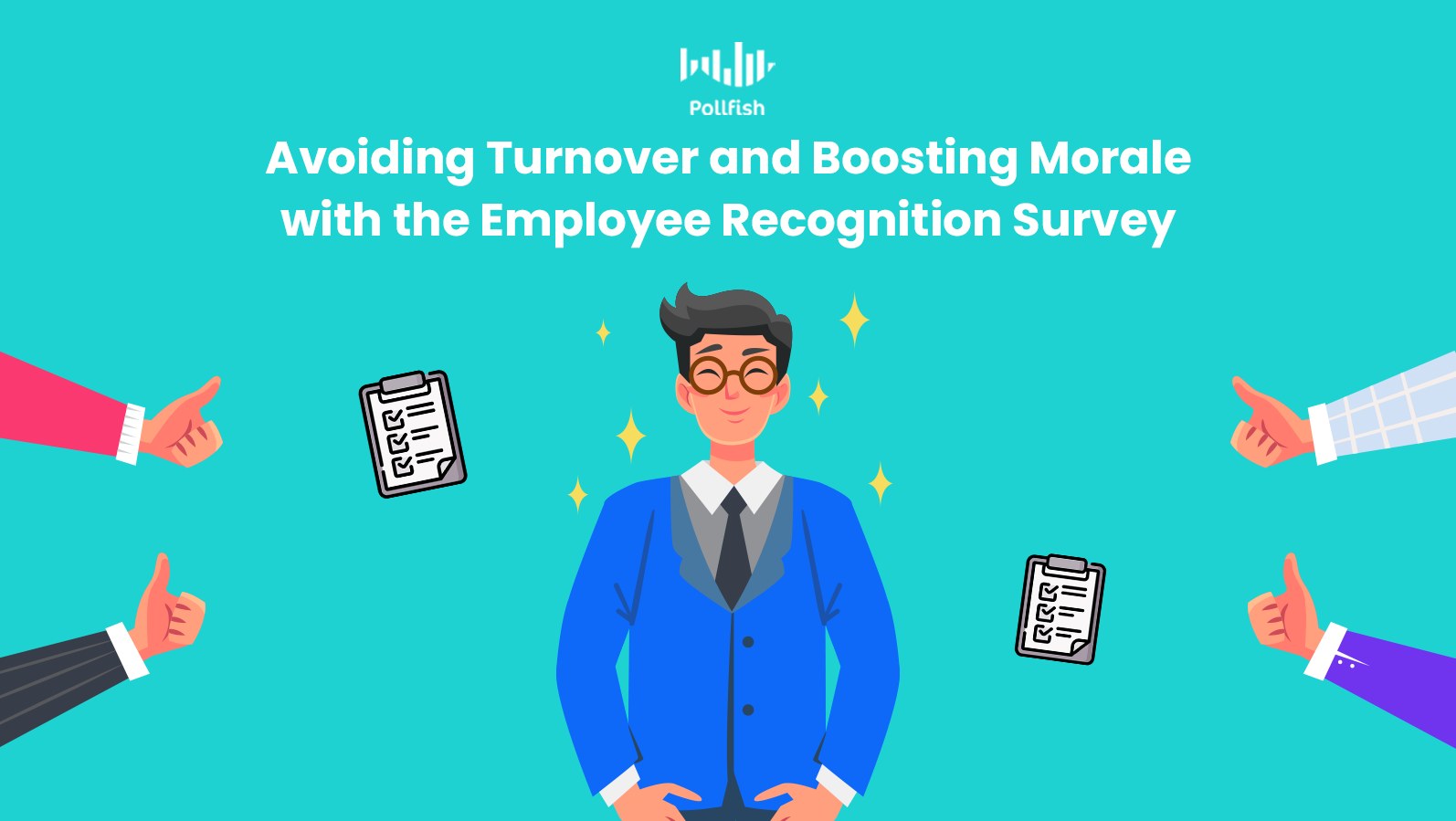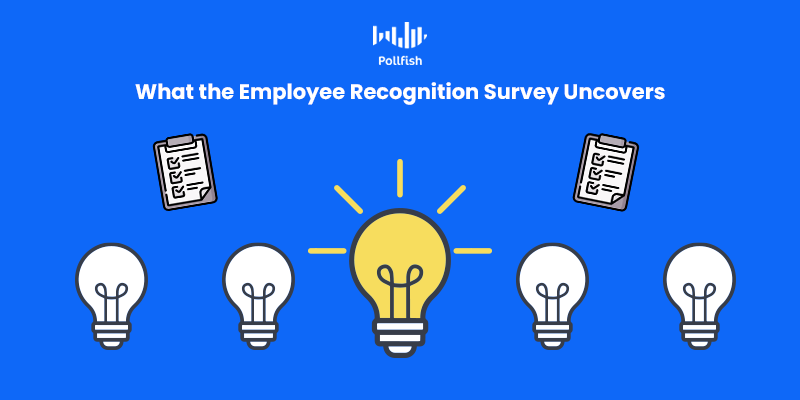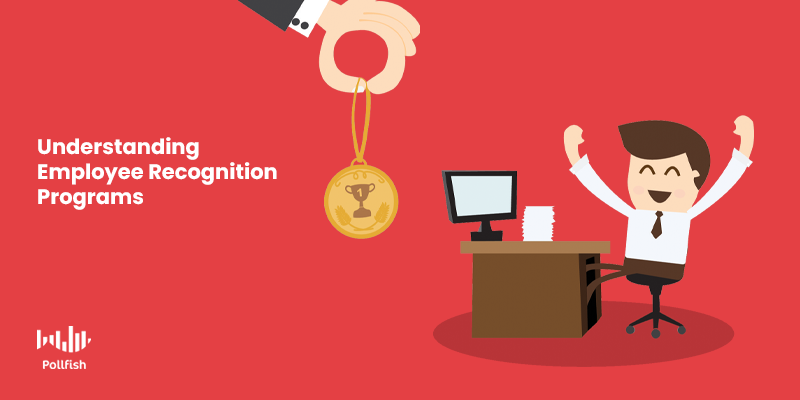Diving into the Employee Recognition Survey to Avoid Turnover & Boost Morale

The employee recognition survey is an adept tool for capturing how well an organization maintains the key value of employee recognition.
While an intangible asset, employee recognition is tantamount to uphold in any business, as there is higher turnover among employees who do not receive employee recognition. As such, employee recognition goes a long way towards supporting employee retention, a claim with plenty of statistical backup.
For instance, 63% of employees who are recognized for their work are unlikely to leave their jobs in search of a new one. Additionally, 40% of employed Americans would pour more energy into their jobs if they received more recognition. When American employees were asked how to better improve their engagement at work, 58% answered with employee recognition.
Evidently, this concept is essential for employee morale. This article explains the employee recognition survey, explaining its core concept and how to create one.
Defining the Employee Recognition Survey
The employee recognition survey is a kind of employee feedback survey designed for measuring and understanding the degree of employee recognition within a business. Specifically, it gauges the perception of employee recognition that employees feel.
Since such a survey covers a topic with several factors that build it up, it also divulges the success of an existing employee recognition program, along with general opinions surrounding it. In addition, this survey also can cover whether an organization is in want of this kind of program or some other method to boost a sense of employee recognition.
Therefore, this kind of survey can cover several topics, as long as they gauge aspects within the border concept of employee recognition.
Before learning further about the survey itself, it is essential to fully understand the concept that makes up the employee recognition survey.
Understanding Employee Recognition
Employee recognition is defined by the acknowledgment of the work, progress and accomplishments that employees have produced at a company, primarily by their employers, managers and higher-ups, along with their peers and other employees.
There are various ways to recognize employees for all of their work in order to foster a positive work environment, the kind that yields happy and fulfilled employees and cuts back on employee turnover.
One such way is with an employee recognition program. This kind of program addresses employee recognition head-on.
Using an Employee Recognition Program
This is a program that establishes employee recognition directly, by rewarding employees in different ways to show appreciation. There are many ways to structure this kind of program aside from merely sending thank you notes and small gifts.
Employee recognition programs can include a system of gamification, in which other employees nominate each other for their efforts. Technology is often introduced in these programs, as they can be tallied in a cloud-based platform. These can include achieving a certain number of points as players would in a game.
This kind of program can be devised by monetary and non-monetary means.
Monetary Employee Recognition Program
Monetary rewards programs include recognizing employees through monetary or material rewards. Some of these awards include the following examples:
- Employee bonuses
- Salary increases
- Commissions
- Stock options
- Health insurance and retirement plans
- Training and career development opportunities
- Tuition reimbursement
- Workspace enhancements
- Free meals and snacks
- Conference and travels
- Gift cards
Non-monetary Employee Recognition Program
Non-monetary rewards programs recognize employees in non-financial or cash-based ways and can be every bit as rewarding, sometimes even more rewarding as these kinds of rewards tend to last longer. Some of these awards include the following examples:
- A job promotion
- Praise on company communication channels such as emails, Slack messages and meetings
- Job security
- Token or certificate of achievement
- Internal career development
- Thank you letters
- Flexible work hours and locations
- New office space
- More days off
- Lunches and outings with managers
The Importance of Employee Recognition
Employee recognition is important for a number of reasons. Firstly, there are the more self-evident reasons, such as that organizations fare better in environments in which employees are happy. When employees are happy, they experience less stress, thus becoming more productive in their positions.
When employees feel appreciated, they are less likely to harbor any negative feelings towards their company. Thus, they are more likely to recommend the company to others when open positions crop up. Additionally, when employees are recognized for their efforts, they are more likely to stay with a company. Thus employee recognition had a direct impact on employee retention.
Any amount of turnover is a negative experience for a company, as it involves searches for new candidates, combing through hundreds of applications, completing rounds of interviews with different candidates, evaluating their work and more.
Additionally, when unhappy employees leave a company, their discontent does not stay at their past job. Rather, they disseminate their discontent on job review websites, forums and social media. They may also spread word-of-mouth messaging that poorly reflects on a company. Essentially, a company’s reputation is on the line in times of turnover or with current unhappy employees.
Employees who feel that they are receiving due recognition foster a more positive work environment. In turn, this sets off loyalty to the company. Therefore, if an employee were to be presented with a better job opportunity, they would not leave their current employer on bad terms; thus they are less inclined to write harmful reviews.
They may even become company advocates, supporting the company online for years to come. All in all, it is critical for employees to feel valued and cared for by their employers and the concept of employee recognition does just that.
What an Employee Recognition Survey Can Help Discover
The employee recognition survey is the ideal market research survey to use for evaluating the several aspects of employee recognition. This allows HR, people teams and executives to understand how well employees feel appreciated and the various efforts that the company can apply in order to make them feel more valued.

The following lists the various aspects pertaining to employee recognition that the employee recognition survey can help businesses discover.
- The correct employee recognition program
- Whether it’s a system of monetary or nonmonetary rewards or a gamified point-tracker on different projects, employers can discover which program suits their company best.
- How employee preferences for recognition align with resources
- By questioning employees on recognition program preferences, businesses can measure those against their own time and resources, avoiding overspending money or pursuing unrealistic programs.
- Employee satisfaction
- The major goal and premise behind employee recognition, this concept enables businesses to gauge how satisfied employees are with their work and work environment. This can be measured with the employee satisfaction survey while containing questions that deal with employee recognition.
- Areas for improvement
- This ensures employees are heard in terms of how they feel the company can do better to recognize their accomplishments, efforts and the like.
- A qualitative market research aspect, employees can specify situations in which they were not recognized for their efforts.
- Company culture
- Businesses can tap into this aspect by learning how the company culture contributes to employee recognition.
- For example, a business can create more events and experiences as a means to ratchet up feelings of recognition.
- How to show recognition cross-geographically
- Aspects of recognition may vary from culture to culture; the employee recognition survey can help show businesses with cross-geographical locations how to show recognition in ways that are appropriate in different cultures.
- In this way, employees can also learn how to better recognize other employees, primarily those who live in different countries and continents.
- Understanding employee differences and passions
- There may be generational divides across the way employees perceive employee recognition. Some may therefore not register an act of recognition, while those of a different generation or disposition may notice one.
- All in all, it allows companies to understand how employees differ in their recognition preferences and at large.
What to Include in an Employee Recognition Survey
There are various questions and subject matters to consider when producing an employee recognition survey. Market researchers can set up the survey to fit the themes explored in the previous section.
For example, you can create a survey based on areas of improvement in regards to employee recognition, or, you can pair it with understanding differences and passions. You can also apply multiple concepts, depending on which are most important for your business.
The following includes question examples to include in the employee recognition survey:
- What project are you most proud of completing in the past quarter?
- Open-ended question
- Purpose: to understand what kind of projects employees feel they are due recognition for.
- What kind of program would best show you that this company appreciates your work?
- Multiple-choice, multiple selection questions
- Answers: list monetary and nonmonetary rewards, verbal acknowledgment, written feedback, etc.
- Purpose: to find the most appropriate employee recognition program
- What have been your favorite types of company rewards for your accomplishments?
- Multiple-choice question
- Answers: list monetary and nonmonetary rewards, verbal acknowledgment, written feedback, etc.
- Purpose: to measure the success of current or past rewards and reward systems
- On a scale of one to 10, how appreciated do you feel [by your manager, coworkers, company]?
- Rating-scale question with a 1-10 scale
- Purpose: To understand the degree of appreciation employees feel by a number of company players. To determine employee satisfaction.
- What are some ways in which you believe the company can improve its employee recognition?
- Multiple-choice, open-ended questions
- Purpose: To learn how the company can improve its current employee recognition standing and efforts.
- How can teams and coworkers across geo-locations better show each other recognition?
- Multiple-choice questions
- Answers: list answers of feasible recognition programs and methods that can best be used in cross-geographic settings.
- Purpose: To discover the differences in what makes up sufficient employee recognition across countries and how to better appreciate coworkers across them.
- What kinds of activities or events would make you feel most recognized and appreciated for the work that you contribute?
- Multiple-choice questions
- Answers: list answers of feasible recognition programs and methods that can best be used in cross-geographic settings.
- Purpose: To discover the differences in what comprises sufficient employee recognition across countries and how to better appreciate them.
Propelling Your Business Forward by Avoiding Employee Turnover
Losing a good employee is just as dire as losing a customer. Therefore, businesses ought to do everything within their capacity to retain their employees.
After all, a negative experience in the workplace can linger, inciting former employees who left a company on bad terms to spread the word, thereby tarnishing a company’s reputation.
One of the biggest issues an employee undergoes is the lack of employee recognition. After all, even in personal lives is the feeling of being unappreciated largely unpleasant. When an employee does not receive their due recognition, they can feel shunned, wronged and lose their motivation and morale to perform optimally.
As such, businesses ought to deploy the employee recognition survey at regular interviews. In order to do so, they must find the most fitting online survey provider. Such a platform will make it easy to create and distribute surveys, so that you can recognize your employees properly.
Pollfish Marketing Team
Ready to Try Pollfish?
Create your survey with AI, target high-quality respondents starting at $0.95 per complete, and start getting results in just minutes in real-time. From running a simple product concept survey to managing a constant stream of trackers for dozens of clients in dozens of countries, we’ve got you.

